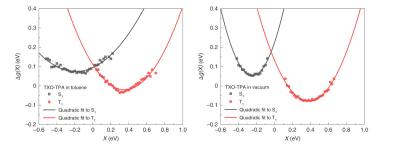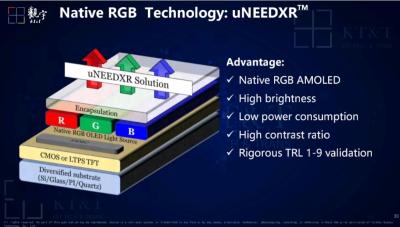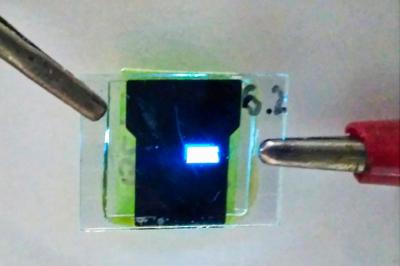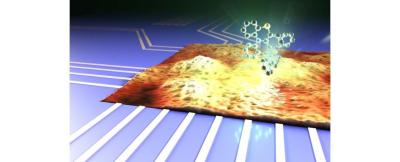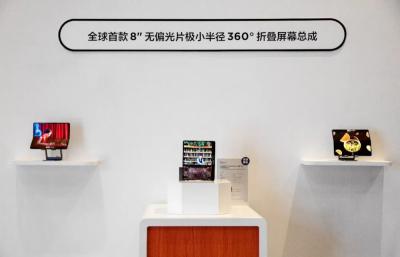Researchers suggest using the dipole moments of TADF host materials to increase emission performance
Researchers from the University of Cambridge, led by Dr Alex Gillett, have studied the effect of host materials (the dielectric environment) on the performance of TADF OLED emitters, and specifically how the dipole moment of the host material can affect the rISC rate of the TADF component.
The impact of the toluene solvent dynamics on the riSC process of TXO-TPA (left: TXO-TPA in an explicit toluene solvent environment, right: TXO-TPA in vacuum)
The researchers tested several TADF OLED materials, and in some of these materials, the effect of different host materials can be quite dramatic. It is believed that commercial TADF devices could benefit from tuning the host and emitter combination to achieve higher performance, including a better efficiency roll-off as conversion of triplets into singlets can be accelerated.
